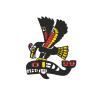Sandra McCullough, Times Colonist, 31 Aug 2014
 If there’s no significant rainfall in six weeks, the Cowichan River and those who depend on it will be in deep trouble.
If there’s no significant rainfall in six weeks, the Cowichan River and those who depend on it will be in deep trouble.
Salmon waiting at the Cowichan Bay estuary will have to be captured and trucked upstream — if there’s any water up there to spawn in — leaving other viable stock stuck at the river mouth as prey for hungry seals. The Catalyst pulp mill at Crofton, which is North Cowichan’s biggest source of taxes and employs 578 people, could shut down indefinitely.
The river, flowing at less than two cubic metres a second, is a source of water and fish, and a symbol of life for Cowichan Tribes.
The City of Duncan gets its water untreated from pristine aquifers that are linked to the river. If the drought continues, the aquifers might also be adversely affected. Nobody knows, but there are fears that things might get worse before they get better.
‘I think this crisis this year is a catalyst for change for us,” said Rob Hutchins, chairman of the Cowichan Valley Regional District board.
His worse fear, he said, is the river drying up at its source, the weir operated by Catalyst Paper at Lake Cowichan.
The mill diverts water from the Cowichan River to its operation through a 19-kilometre pipeline. The mill uses 141 million litres per day, typically between one and 23 per cent of the river’s flow.
The crisis striking the Cowichan River is attributed to climate change.
“Our climate is changing and all we have to do is look at California to see extended droughts,” Hutchins said.
For years, the CVRD board has been considering its options, including raising the weir — a concrete dam with gates — so more water can be contained in Lake Cowichan for use downstream over summer. Raising the weir wouldn’t have helped the situation this year, because a drier than normal winter only filled the lake to 30 centimetres from the top of the weir, instead of submerging the weir by 1.5 metres.
But that’s where proposed pumps could kick in, pumping lake water into the river to keep a sustainable flow in dry years.
If climate-change projections pan out, the West Coast will have wetter winters and drier summers.

Rodger Hunter, co-ordinator of the Cowichan Watershed Board, points out the earth berm built to keep debris from Stoltz Bluff (in background) from entering the Cowichan River. (Photograph By Submitted – Click here for more)
This is one reason why Hutchins and Rodger Hunter, co-ordinator of the Cowichan Watershed Board, favour installing pumps and raising the weir by 30 cm, increasing the storage of lake water to benefit fish and people downstream in warmer months.
The CVRD board will revisit the issue of the weir this fall, said Hutchins. A strong voice is expected from some of the 800 property owners circling the lake who will lose some of their summertime beach frontage as the lake fills to a new level. It’s still much lower than the levels the lake reaches in wintertime, but the many lakeside dwellers put a high value on summer recreation.
But for right now, there’s close to one metre of water left behind the weir that has to keep the river flowing into October, Hunter said on a recent media tour. It’s important to have enough water to send pulses of water downstream, around Thanksgiving, to allow salmon waiting in the estuary to fight their way upstream and spawn, he said.
The area below the weir was a favourite swimming hole, but it was fenced off after a fisherman died there a few years ago.
Lake Cowichan Mayor Ross Forrest said the loss had been rectified by the construction of a municipal dock a short distance away. TimberWest sold the town a portion of the lake bottom and milled wood for the project while the graduation class of Lake Cowichan High School raised $5,000 toward the $100,000 project.
Downstream, Hunter shows where the river narrows to a natural “pinch point” near the Greendale Trestle, now part of the Trans-Canada Trail. The river here is at the same elevation as the weir, and at times of low flow, water can get backed up as though it’s going through a funnel, Hunter said.
Geographic features like this narrowing “prevent the river from blowing itself out,” Hunter said.
“If you took this control point away, you’re going to have flooding downstream.”
Farther downstream at Stoltz Bluff, a human intervention kept nature from choking off fish habitat with silt. A $1.3-million project, completed in 2005, involved moving the river away from looming sand bluffs. Today, the bluff debris falls on a dry area, and the river is protected by an earthen dam.
“There’s been a huge rebound in chum numbers because the eggs are not getting smothered,” Hunter said.
 Down the river near Duncan is another huge feat of engineering designed to aid the salmon. A huge pile of gravel was excavated from the river in 2013, and the river was rerouted into streams.
Down the river near Duncan is another huge feat of engineering designed to aid the salmon. A huge pile of gravel was excavated from the river in 2013, and the river was rerouted into streams.
“This makes it easier for flood waters to come downstream while it preserves fish habitat,” Hunter said.
Duncan’s septic system is near the river downstream from the town. The system, operated by the Joint Utilities Board, includes expansive lagoons where septic material is treated before being spewed into the river through nine diffusers.
But now, instead of being below the surface, the diffusers are spewing treated effluent from above the surface.
The stream is tested and approved by health authorities as being within the required standards, but there remains “an ick factor,” said Hunter.
“What’s going in the river from the [septic plant] is less than what’s in there already,” Hunter said. “Still, there’s science and then there’s how people feel about it.”
The river down near the estuary is sluggish and a fraction of the flow it was at the weir, 32 km upstream, “a different Cowichan River than up at Stoltz,” Hunter said.
Rainfall is key to avoiding disaster on the Cowichan River.
Hunter said: “If we don’t get rain by Oct. 7, the weir will be irrelevant.”
© Copyright Times Colonist
 Email
Email



